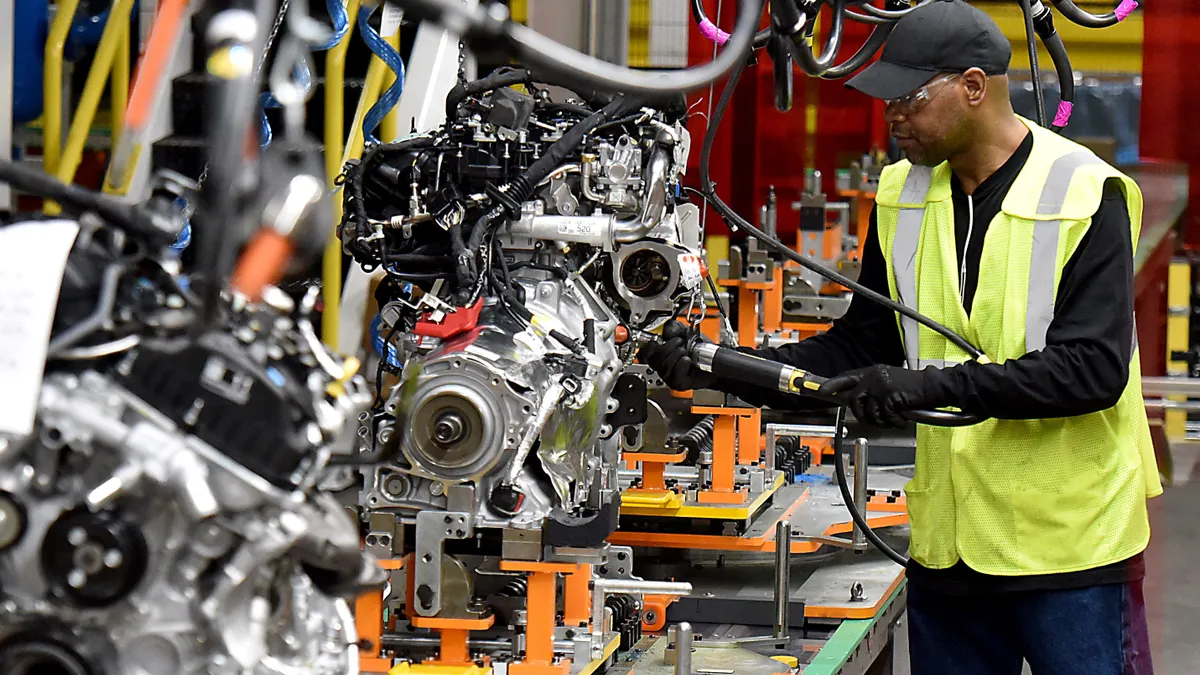Dive Brief:
- Vehicle imports from Asia and Northern Europe could each fall by as much as 11% in 2020 if the U.S. follows through with a set of proposed auto tariffs at the 25% level. This projection assumes the tariffs would go into place in the second quarter of 2019, according to an analysis by Drewry.
- Such tariffs impact multiple American ports, with the biggest impacts at the Port of Baltimore, ports of Los Angeles and Long Beach, and New York and New Jersey.
- Many of the extra costs associated with the proposed tariffs would be passed along to the consumer or supply chain partners, according to Neil Davidson, Drewry’s senior analyst for ports and terminals. "We also assume some US importers will absorb all or part of the extra cost, while others will delay their decision and that some foreign finished vehicle producers may lower their prices to protect sales," Davidson said in a statement.
Dive Insight:
"The Trump administration’s auto tariffs, if implemented in the second quarter of 2019 will create significant negative effects — especially in the high intensity scenario — for the finished vehicle and auto parts seaborne trade in the eastbound Transpacific and westbound Transatlantic trade routes," Drewry noted. "This policy move could trigger a trade war with the [European Union] given the importance of these commodities."
Drewry looked at three different scenarios in its analysis: a low-intensity scenario where 5% tariffs are imposed on U.S. imports of finished vehicles and auto parts, another at the 15% level, and finally at the 25% level.
Drewry expects carmakers to begin importing more cars before these tariffs take effect, just as other retail sectors imported at record levels at the end of 2018 to beat tariffs on Chinese goods. This rush, under 5% tariffs, would lead to a 7% increase in import volume for finished vehicles this year, which is expected to be followed by a 2% drop in volume in 2020 and a 3% drop in 2021. If tariffs were instead at 25% import numbers this year would only go up by 2% and would fall by 10% and 14% in 2020 and 2021, respectively.
This uptick in imports to beat tariffs may already be showing up in the numbers for vehicle parts. Import numbers for auto parts rose 4% YoY in the third quarter of 2018, but this jumped to 19% growth in the fourth quarter. "The last time auto parts imports registered a quarterly double-digit growth expansion was in the fourth quarter of 2014," Drewry said.
Imports of auto parts, with 5% tariffs, are expected to increase by 13% in 2019, followed by drops of 6% in 2020 and 2.4% in 2021. Under 25% tariffs, the growth of auto parts this year would remain at 13%, but the decreased in 2020 and 2021 are forecast to increase to 14% and 11%, respectively, according to Drewry.
The high cost that results from these tariffs would likely be absorbed by importers "for as long as they can," predicted Drewry, but the cost would likely be passed along to the consumer as early as the fourth quarter of 2019.
Finished vehicle and auto part manufacturers in Mexico and Canada could stand to benefit if these tariffs go into place, Drewry noted.















